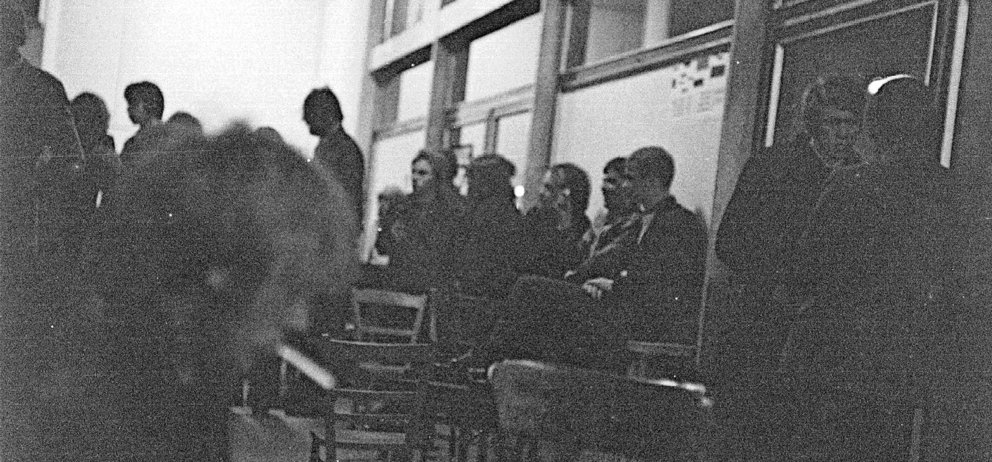What was happening at the Zodiak Free Arts Lab? How did the different scenes inspire each other? What influence did the Zodiak have on the generations to follow? To answer these questions, we sat down at the virtual Zoom table with players from different eras: painter Elke Lixfeld, who co-founded the Zodiak; musician Alfred 23 Harth, who took a saw to the Zodiak's stage in 1968; musician Alexander Hacke, who helped shape post-punk in Berlin a decade later; and musician Andrea Neumann, who saw Berlin become the capital of improvised music in the nineties. A conversation about experiments, freedom and solidarity – as well as the vital underground.
The Zodiak Free Arts Lab only existed for about a year and a half, from late 1967 to mid-1969, but it is considered legendary. Few visual and audio recordings from the Zodiak exist. Elke, what was the space like anyway?
Elke Lixfeld (EL): The Zodiak had two rooms. The front one was all white, a brightly lit room. There were armchairs and canapés everywhere where people would sit and smoke. To get to the back room, you had to go through a small tunnel. Then you came into a huge black room. That was where the action was. Music, but other kinds of action, too. We performed there every day with our group Human Being, which consisted of Norbert Eisbrenner, Broderick Price, Beatrix Rief, Hans-Joachim Roedelius, Boris Schaak, Verena Schirz, Christoph Sievernich and me. The Zodiak was a place where you could really live freely. A hub of the scene that attracted everyone creative, including filmmakers. Music was made day and night. Films like “Chelsea Girls” [Andy Warhol, 1966] were also shown, to expand consciousness.
Who was it that ran the Zodiak?
EL: Conrad Schnitzler found the space and set up the project. But fairly quickly, he handed it over to our group Human Being. From then on, we ran the Zodiak as a collective. Boris Schaak, who sadly passed away in 2012, was a bit of a mastermind. There was also a landlord, but I never really noticed him. [The landlord was the photographer Paul Glaser. Glaser was the official operator of the Zodiak, but after a while he left the programming to Conrad Schnitzler, who in turn left it in the hands of Human Being.]
Alfred Harth (ALH): Conrad Schnitzler was a key figure of the time. He was originally a visual artist and studied with Beuys. He then broke away from the visual arts, perhaps also from Beuys. Schnitzler played the cello, although he could not “do” it in the conventional sense. He used it as a sound object, played it like a punk musician of later times would do. Or, he would put on his loudspeaker helmet and strapped on a cassette recorder. That was all very original.
